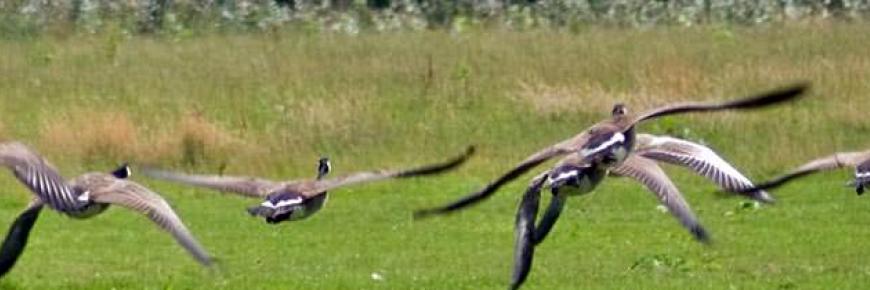Work Package Reports
RINSE examined invasive non-native species across groups including aquatic plants, aquatic invertebrates, birds, fish and land mammals and across a range of habitats. This was achieved through three different Work Packages:
1. Targeting and Prioritisation
For invasive non-native species, prevention is by far the best cure. With this in mind, the RINSE project commissioned Cambridge University to undertake a study of the invasion patterns of non-native species to allow us to predict where a non-native species may thrive and become invasive within Europe. The aims of this study were to:
- Complete a registry of Non-Native Species (NNS) in the four RINSE countries (UK, France, Belgium and The Netherlands)
- Complete a 'screening' of the worst invaders according to national and international organizations, creating two groups depending on their presence (Black List) or absence (Alert List) in any of the four RINSE countries
- Map the predicted distribution of these INS across the RINSE region using Species Distribution Models (SDMs)
This report demonstrated that the Two Seas area is a ‘hot spot’ for invasive species, with at least 30% of all non-native species registered in Europe present in the Two Seas area, despite the fact that it represents only 9.7% of the total area of Europe. A number of useful outputs were produced by the report, which the RINSE Partners encourage you to use to guide future work on invasive non-native species.
A summarised version of the report, detailing the Work Package aims, methods, results and conclusions in brief, is available here in English.
The full report is available here in English, French and Dutch.
Report Annexes are available here
RINSE Black List species RINSE Alert List species
Invasion heat maps: Black List species Alert List species
2. Training and Awareness Raising
This Work Package sought to develop a wide range of tools to increase public and stakeholder awareness of INS, their associated problems and the management options currently recommended. This was achieved through seven sub-actions:
- Establishment of 3 citizen science surveys, designed for different INS, targeting a specific audience.
- Development and evaluation of a smartphone app to identify and record INS in the field. Cross-border cooperation between partners has enabled the development of an app available in three languages allowing users to identify and record 35 INS found in theTwo Seas area.
- Creation and dissemination of materials on INS for specific target audiences. Subsequently a range of materials were produced targeting specific INS, such as the management of geese, or targeting a key audience such as recreational boaters.
- Development of the Qbank online invasive plants database. This included translation of Q-Bank into French. Through this action, 15 new species were added to the QBank database, and all factsheets and identification keys have been translated into French.
- Development and testing of training materials for key audiences. For this, priority audiences were identified by the RINSE Partnership, with tailored training programmes and materials developed for each.
- Development of training for road managers was designed and disseminated with a target of cross-border cooperation.
- Facilitate cross-border exchanges in best practice between the four RINSE countries. The first was a partner exchange and the second a Best Practice Workshop on volunteer engagement and citizen science, attended by delegates from across the Two Seas Area.
The full report is available here
3. Field trials and demonstrations
This Work Package was composed of seven sub-actions which combined to provide strong insights into how management interventions can reduce the impact of non-native species inEurope. These included:
- Field trials, with three studies designed to experimentally test the effectiveness of management interventions on the invasive plant species Australian swamp stonecrop (Crassula helmsii) and the invasive fish species topmouth gudgeon (Pseudorasbora parva).
- Field demonstrations exploring the different environmental management options for invasive species.
- Demonstrations on non-native goose
- Partner Workshops were held, allowing progress to be discussed and reviewed.
- Three Best Practice management Workshops were also held, attracting delegates from acrossEurope. These Workshops covered the control of INS such as mink, muskrat, geese, ruddy duck, aquatic plant species and catchment-level strategies.
The full report is available here in English, French and Dutch
Partner Annex: creeping water primrose
Partner Annex: Himalayan balsam
Partner Annex: New Zealand pygmyweed
The RINSE Partnership is happy to share the data associated with this study. If you should require this data please contact the RINSE Lead Partner, Norfolk County Council on + 44(0)1603 222773 or email nnnsi@norfolk.gov.uk

